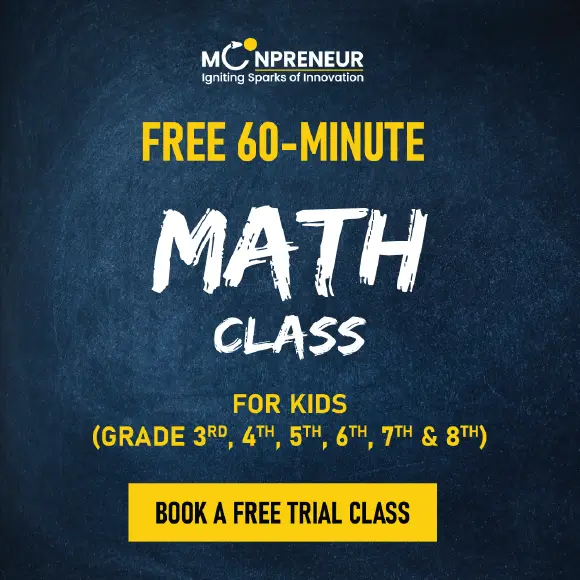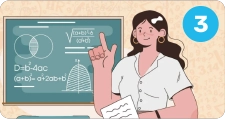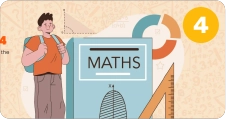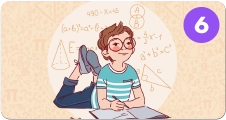How to Prepare for the Geometry Regents
The Geometry Regents. It strikes fear or maybe just a healthy dose of nervous excitement in the hearts of many New York high school students. But fear not, intrepid geometry warriors! With a well-crafted study plan and some effective practice strategies, you can approach this exam with confidence and achieve the score you desire.
This blog will be your comprehensive guide to mastering the Geometry Regents. We’ll delve into effective study plans, explore various practice methods, and offer tips to maximize your performance on exam day. So, grab your pencils, and protractors, and let’s get started!
Recommended Reading: Developing a deeper understanding of math concepts
The Regents Exam: Geometry Edition
The Regents Exam in Geometry is a standardized test in New York State that assesses a student’s understanding of geometry as defined by the NYS Common Core Learning Standards (CCLS). Developed by the New York State Education Department (NYSED), the exam is designed to be challenging but fair, allowing students to showcase their abilities across various domains of geometry.
What to Expect on the Test
Before strategizing, it is important to know what we are getting into. This test blueprint reveals the breakdown of topics covered and the emphasis placed on each. Here’s a glimpse of what you’ll encounter:
Domains: The test focuses on six major domains:
- Congruence (G-CO) makes up 27%-34% of the test and deals with rigid transformations and proving geometric theorems.
- Similarity, Right Triangles, and Trigonometry (G-SRT) covers 29%-37% and explores similarity transformations, proving theorems related to similarity, and working with right triangles and trigonometry.
- Geometry Circles (G-C) is a smaller portion (2%-8%) that focuses on understanding and applying theorems about circles.
- Expressing Geometric Properties with Equations (G-GPE) makes up 12%-18% and assesses translating between geometric descriptions and equations, using coordinates to prove theorems, and more.
- Geometric Measurement & Dimensions (G-GMD) is a minor domain (2%-8%) that tests understanding and applying volume formulas and visualizing relationships between 2D and 3D objects.
- Modeling with Geometry (G-MG) covers 8%-15% and requires applying geometric concepts to solve real-world problems.
Clusters and Emphasis:
Within these domains, some clusters further categorize the topics. The test places more emphasis on Major Clusters (68%-83%), with Supporting Clusters (4%-14%) and Additional Clusters (12%-24%) receiving less focus.
Question Formats:
The exam consists of four parts with both multiple-choice and constructed-response questions.
- Multiple-choice questions (most common) assess procedural fluency and conceptual understanding. They may involve multiple steps and require applying multiple skills and concepts simultaneously.
- Constructed-response questions come in 2-credit, 4-credit, and 6-credit formats, demanding a deeper understanding of procedures, concepts, applications, and geometric constructions.
Test Logistics
- The exam is a single booklet administered within a designated timeframe set by NYSED.
- Students are allowed three hours to complete the test.
- Standard testing conditions apply, and following directions is crucial.
- Accommodations are available for students with disabilities as per their Individualized Education Programs (IEPs) or Section 504 Accommodation Plans (504 Plans).
Knowing what to expect on the Regents Exam in Geometry is the first step towards success. By familiarizing yourself with the test format, question types, and content areas, you can develop a targeted study plan and approach the exam with confidence.
Recommended Reading: 5 creative ways to make math fun for kids
Crafting Your Battle Plan: Building a Successful Study Schedule
Now that we know the enemy, it’s time to formulate a plan of attack. Here’s how to create a study schedule that optimizes your learning:
- Start Early, Avoid the Cram: Don’t wait until the week before the exam to start studying. Ideally, begin reviewing concepts a few weeks or even months in advance.
- Find Your Rhythm: Schedule dedicated study sessions throughout the week. Aim for shorter, focused sessions (30-60 minutes) rather than long, tiring marathons.
- Variety is Key: Incorporate different study methods to keep things engaging. Textbooks, class notes, online resources, and practice problems can all be part of your arsenal.
- Actively Engage: Don’t just passively read your notes. Actively engage with the material by rewriting concepts, summarizing key points, or creating flashcards for important formulas and theorems.
- Practice Makes Perfect: Set aside time specifically for practicing problems. This is crucial for building confidence and solidifying your understanding.
- Seek Help: Don’t be afraid to ask for help! Utilize resources like your teacher’s office hours, online tutoring platforms, or study groups with classmates.
Sharpening Your Skills: Effective Practice Strategies
Now, let’s explore some effective strategies to get the most out of your practice sessions:
- Official Regents Practice Exams: The New York State Education Department releases past Regents exams. Utilize these as valuable practice tools. Simulate exam conditions by setting a timer and working the problems on your own.
- Focus on Weaknesses: Identify the areas you struggle with and dedicate more practice time to those topics. Analyze your mistakes on practice problems and understand why you got them wrong.
- Variety of Resources: Supplement official practice exams by solving problems from textbooks, online resources, and commercially available Regents prep books.
- Explain Your Steps: When solving problems, don’t just get the answer. Write down your thought process and explain each step you take. This will help you identify logical errors and improve your problem-solving approach.
- Time Management: Practice managing your time effectively during practice sessions. This is crucial for exam day, where you’ll have a set amount of time to complete each section.
Mastering the Art of Test-Taking: Strategies for Exam Day
The big day has arrived! Here are some tips to maximize your performance on the Geometry Regents:
- Get a Good Night’s Sleep: Being well-rested is essential for clear thinking and focus.
- Eat a Healthy Breakfast: Fuel your brain with a nutritious breakfast that will keep your energy levels up throughout the exam.
- Arrive Early: Avoid last-minute stress by arriving at the testing center early and familiarizing yourself with the surroundings.
- Read Instructions Carefully: Take a moment to read and understand the instructions for each question carefully before jumping in.
- Budget Your Time: Skim through the entire exam first to get a sense of the questions and allocate time accordingly.
Conclusion
In conclusion, the Geometry Regents may seem daunting, but with a well-structured study plan, effective practice strategies, and a positive attitude, you can conquer this challenge. Remember, consistency is key. Studying a little bit every day is more effective than cramming the night before.
Don’t be afraid to ask for help, utilize available resources, and most importantly, believe in yourself. With dedication and practice, you’ll be well on your way to achieving your desired score on the Geometry Regents and demonstrating your mastery of the wonderful world of geometry. Good luck!
Want to excite your child about math and sharpen their math skills? Moonpreneur’s online math curriculum is unique as it helps children understand math skills through hands-on lessons, assists them in building real-life applications, and excites them to learn math.
You can opt for our Advanced Math or Vedic Math+Mental Math courses. Our Math Quiz for grades 3rd, 4th, 5th, and 6th helps in further exciting and engaging in mathematics with hands-on lessons.













